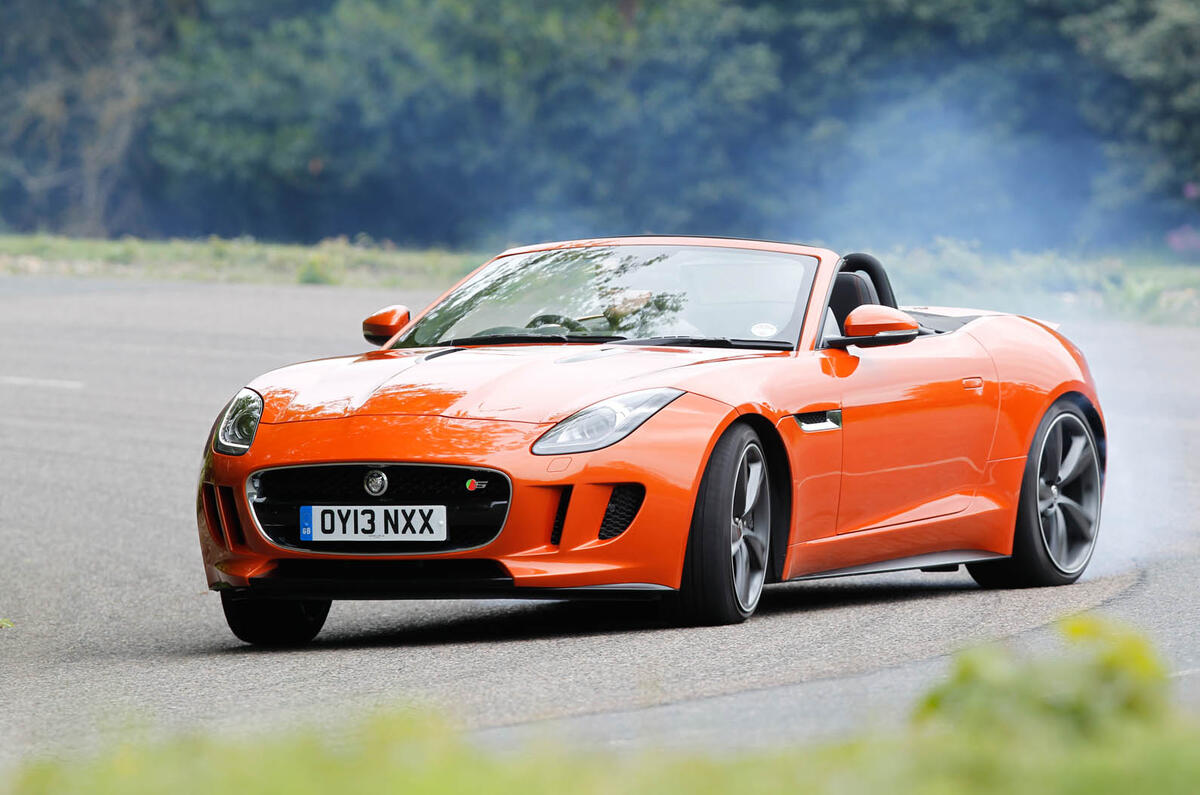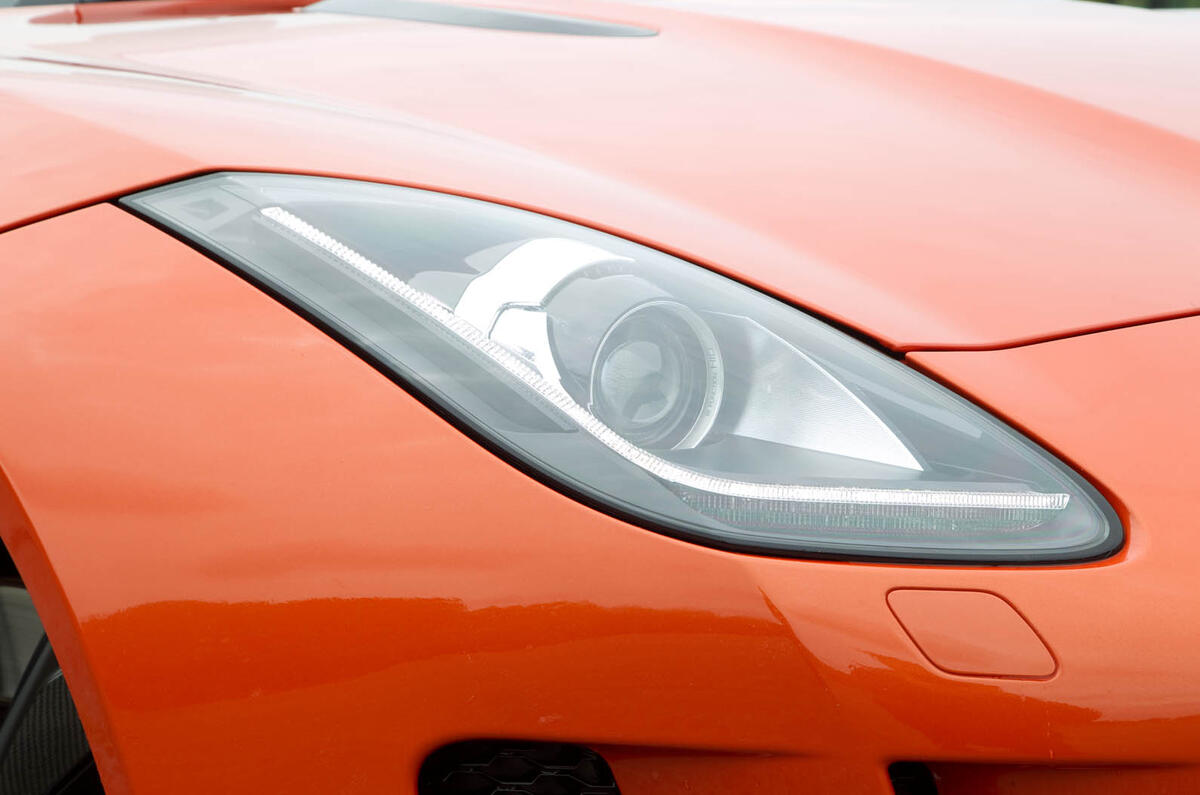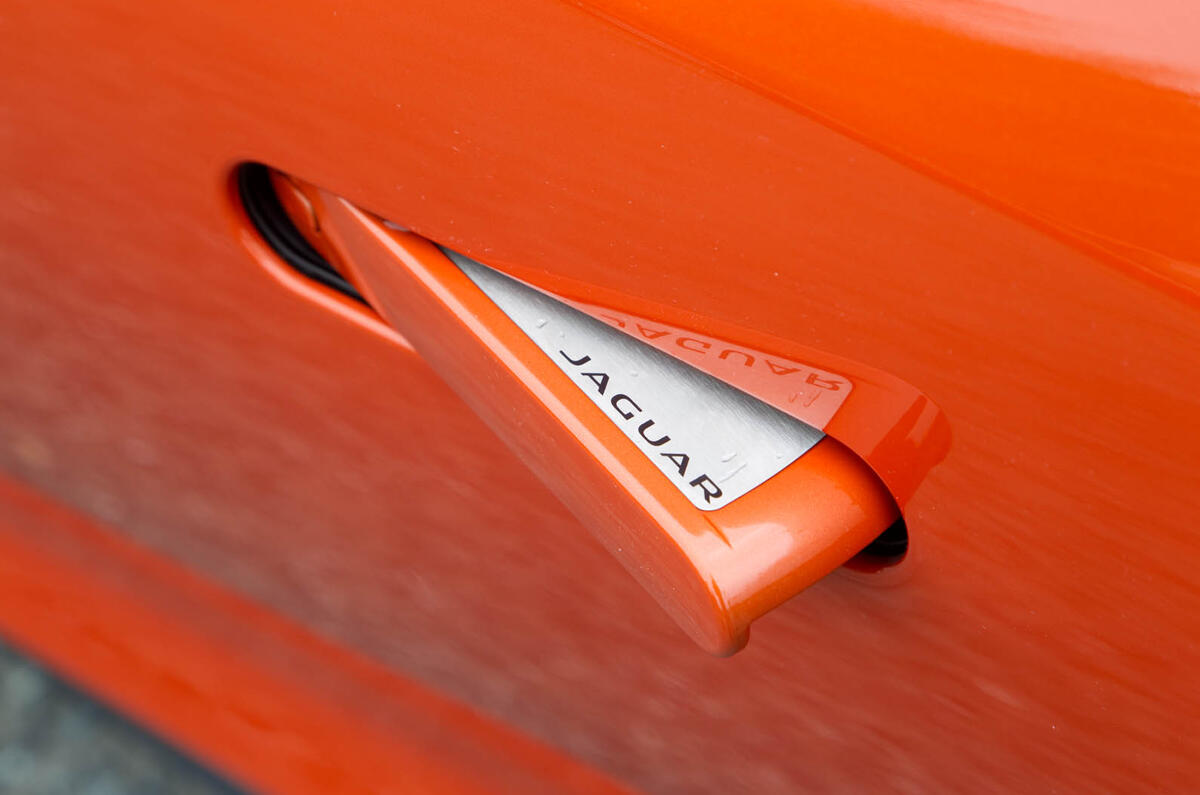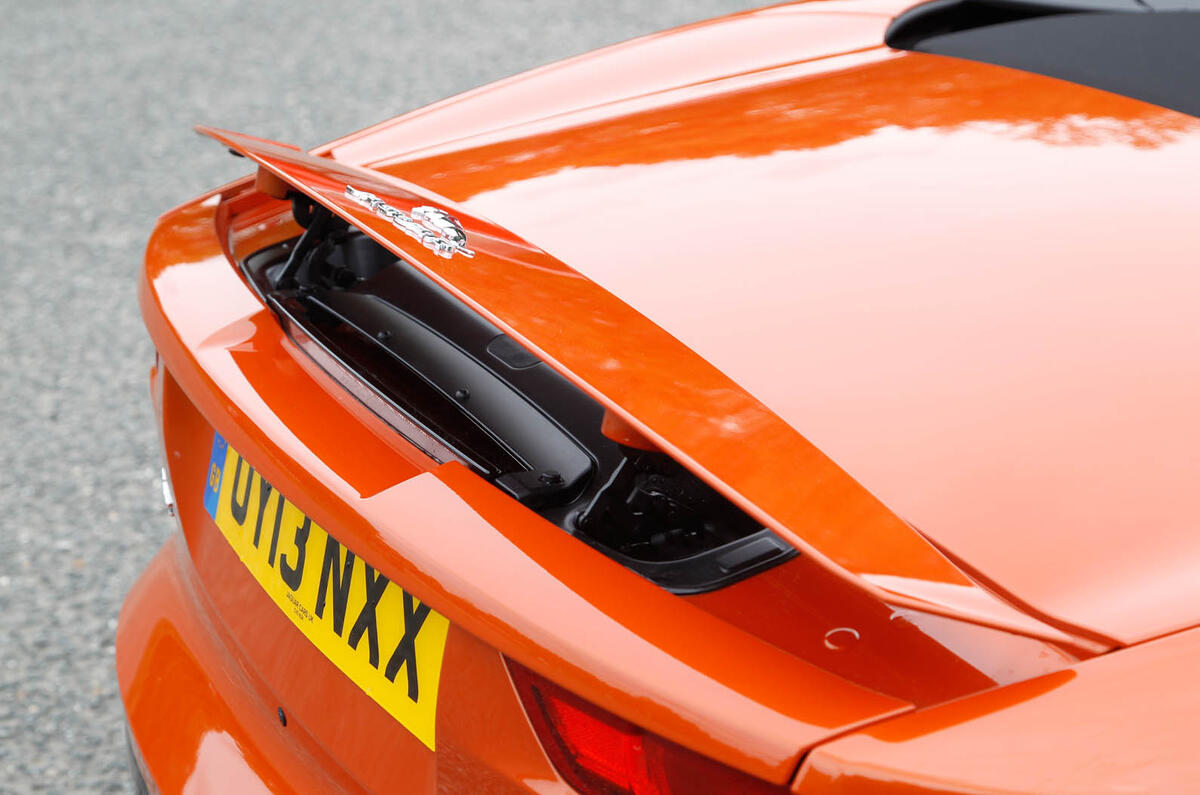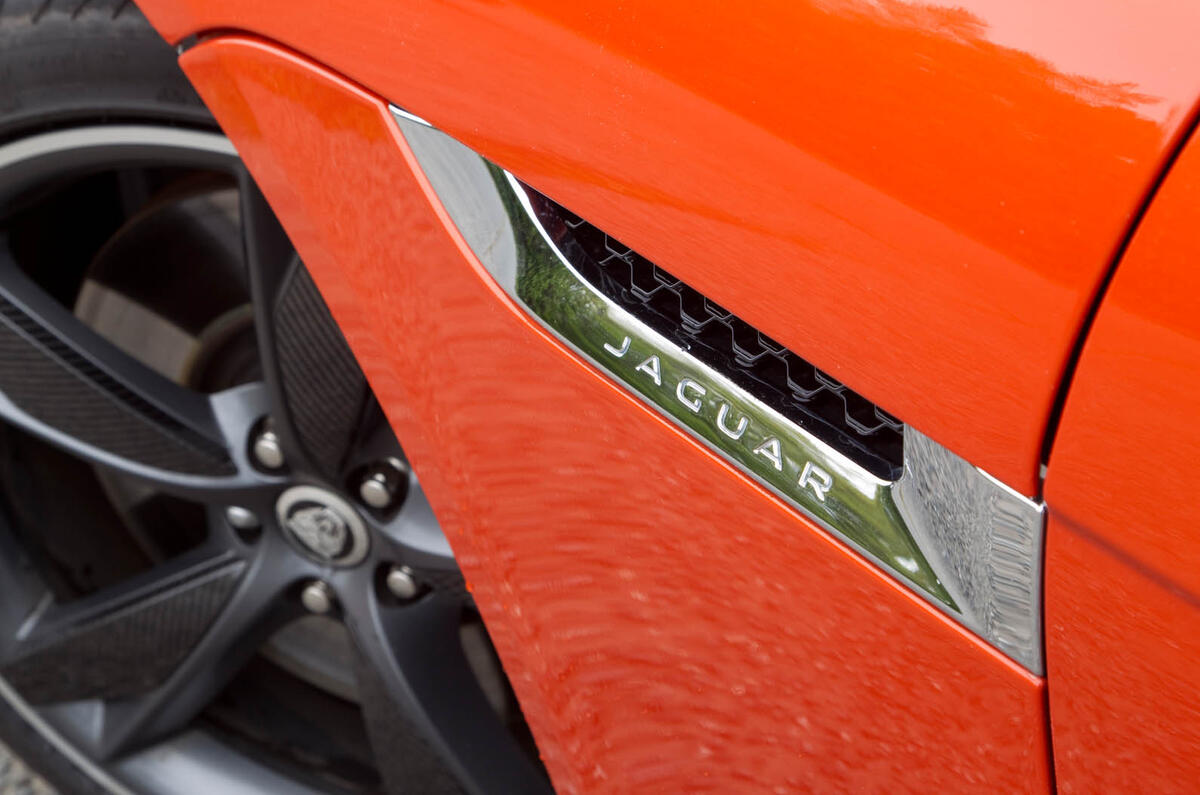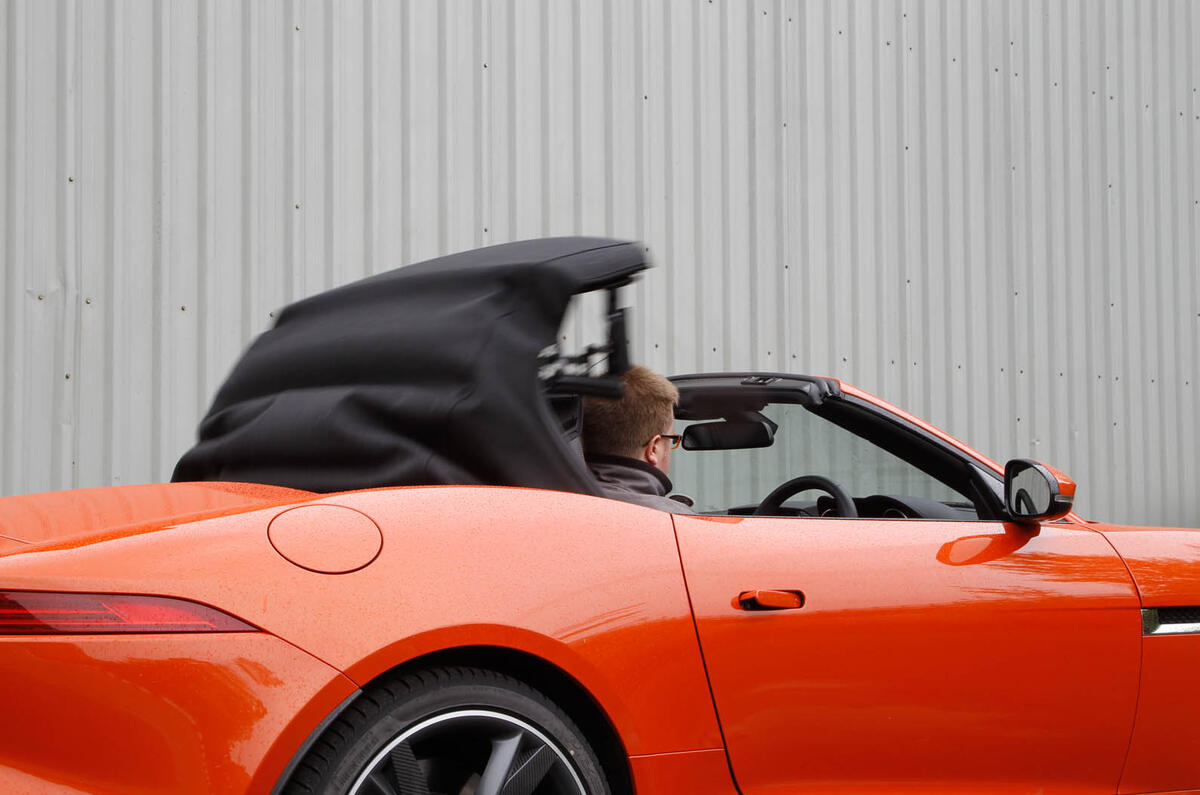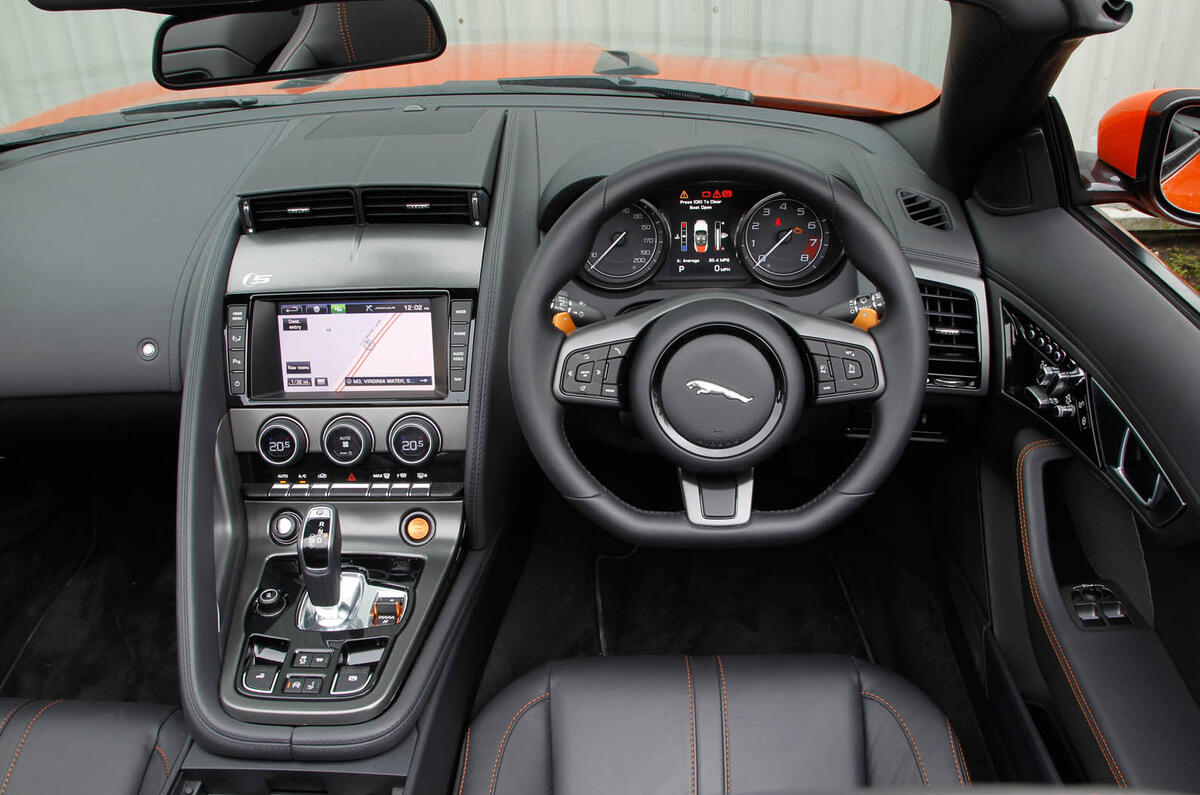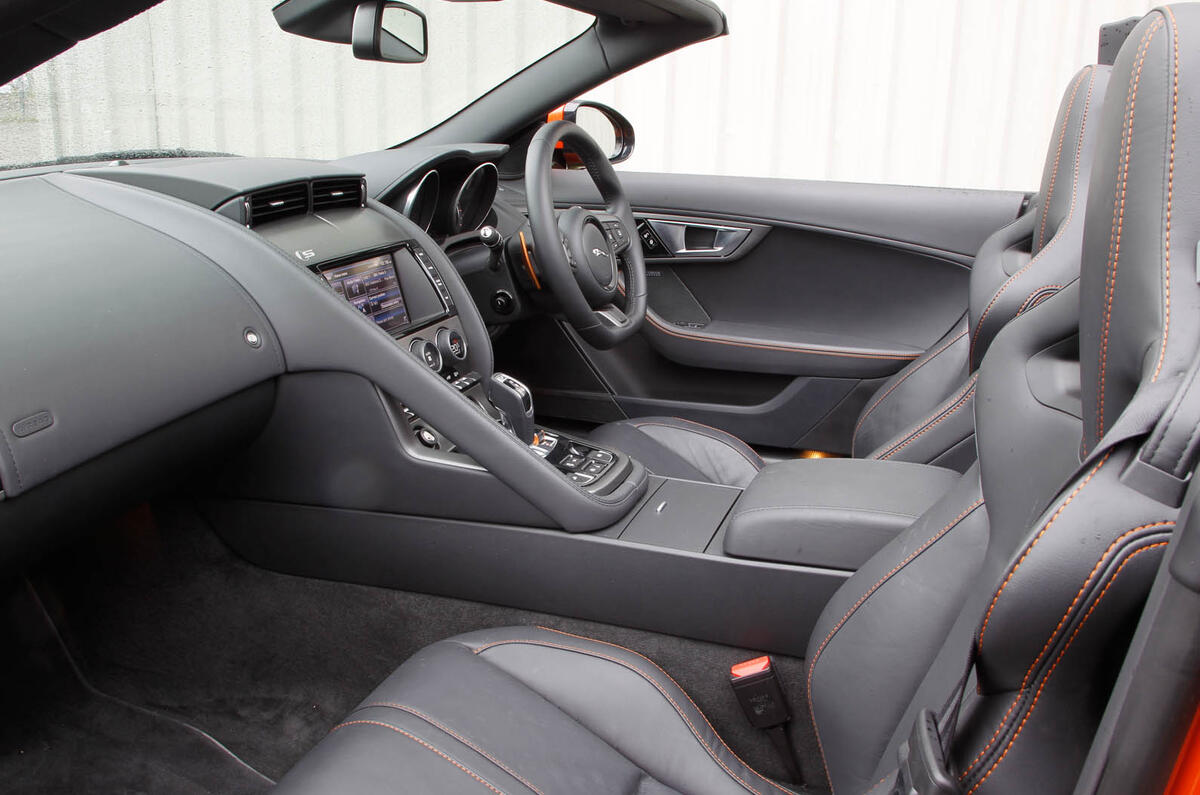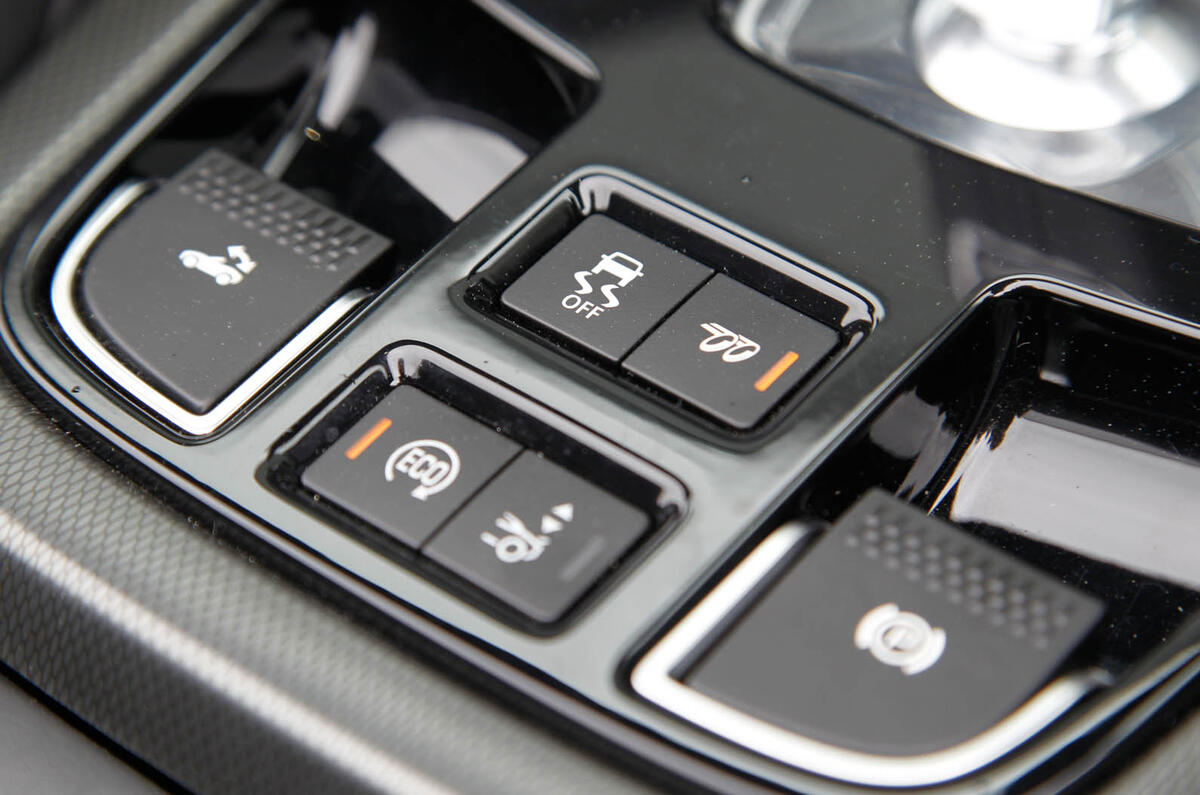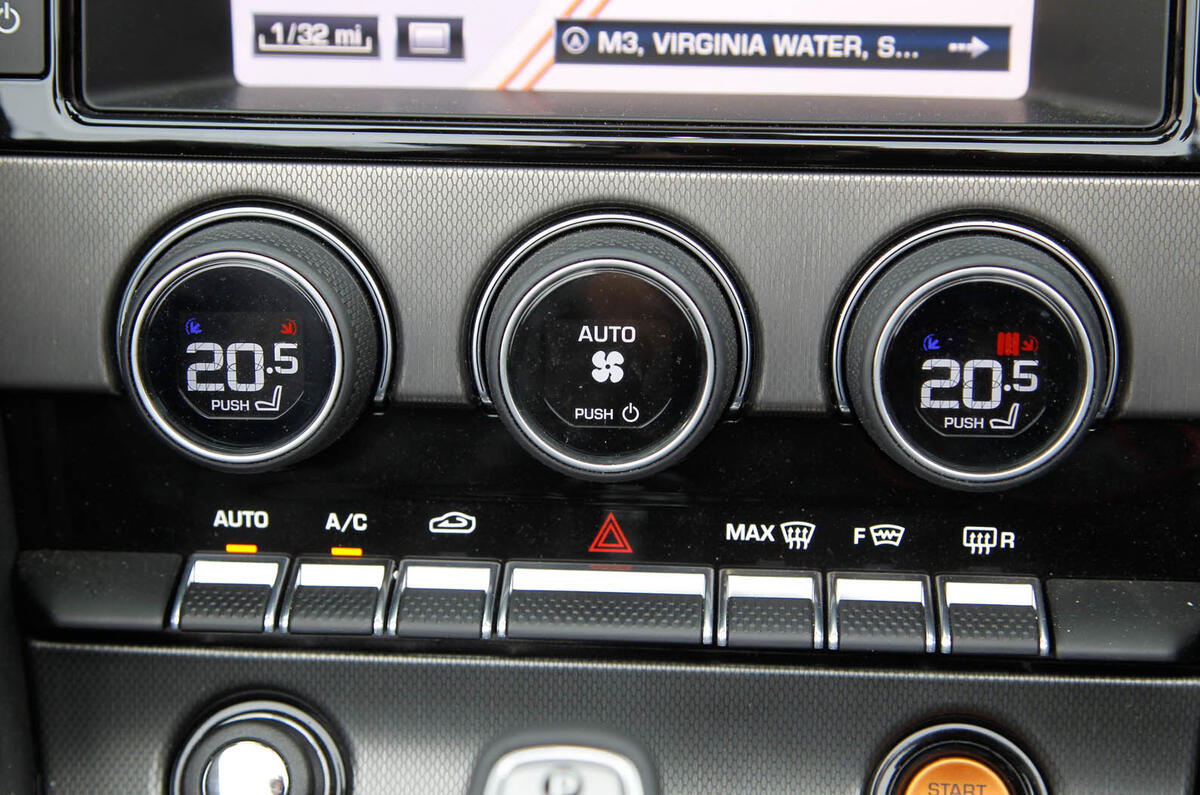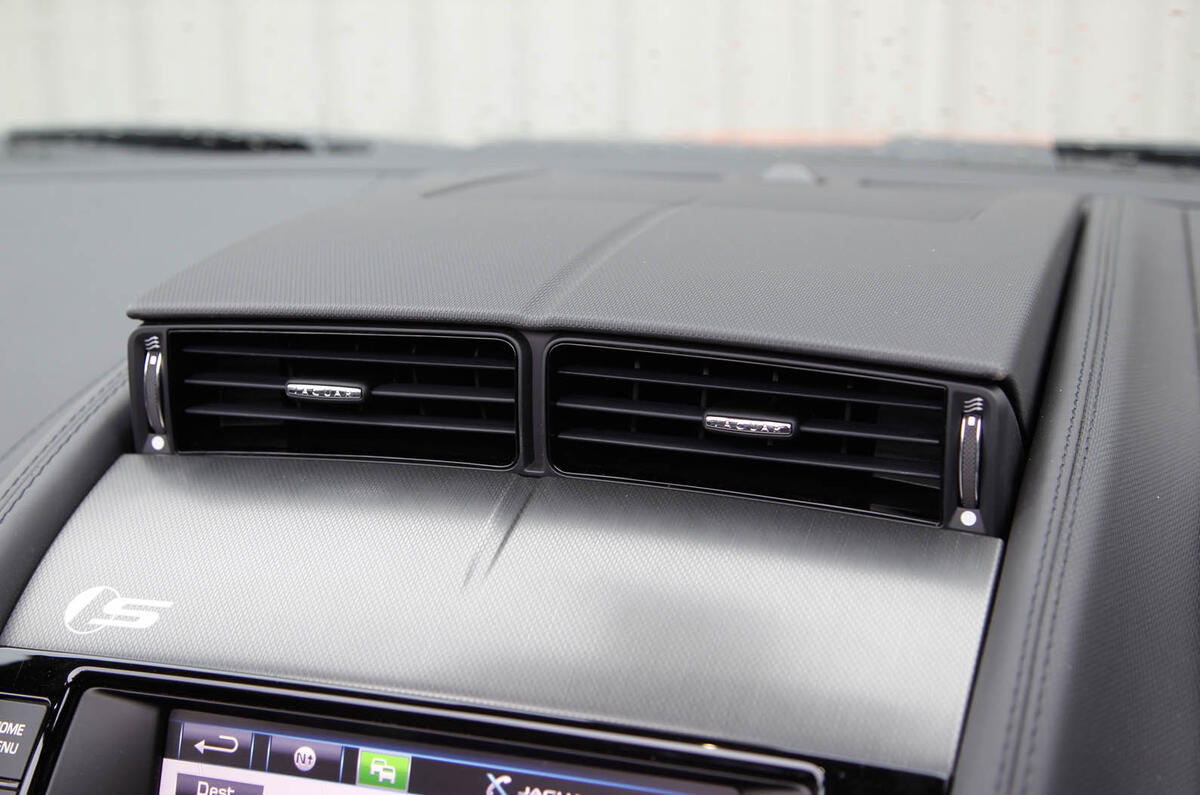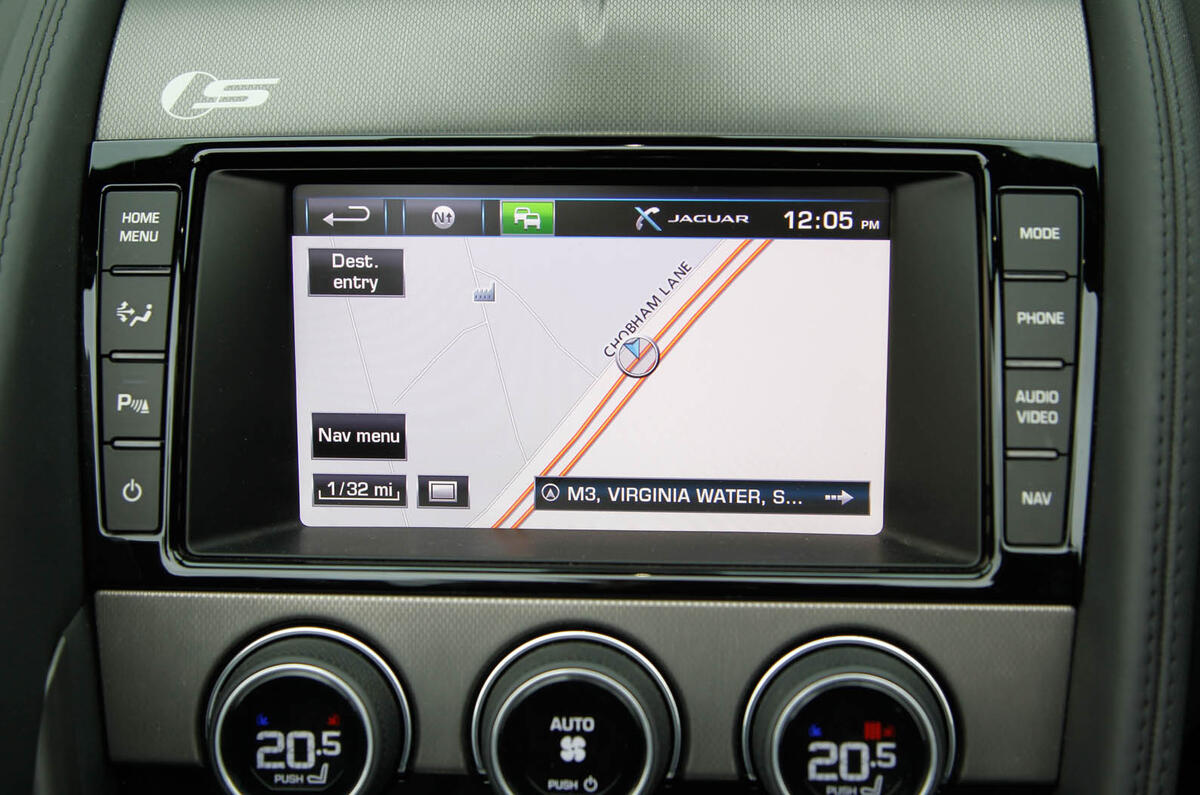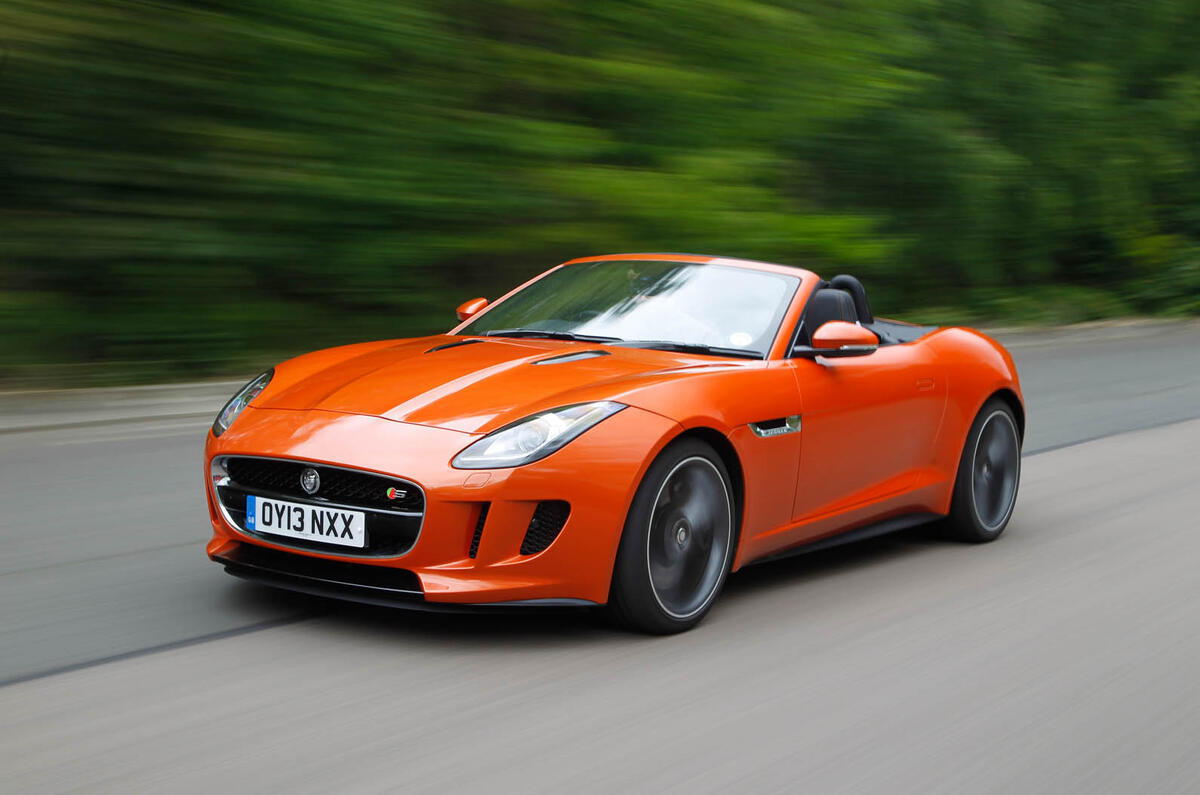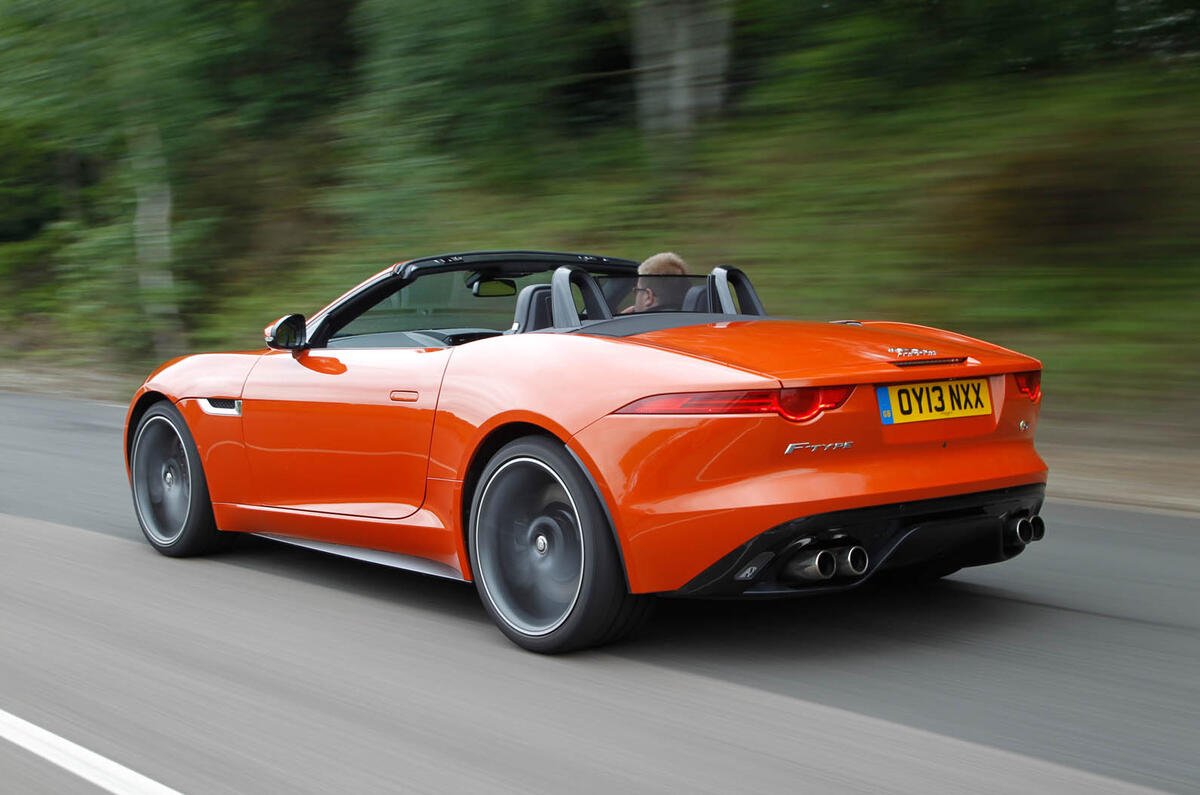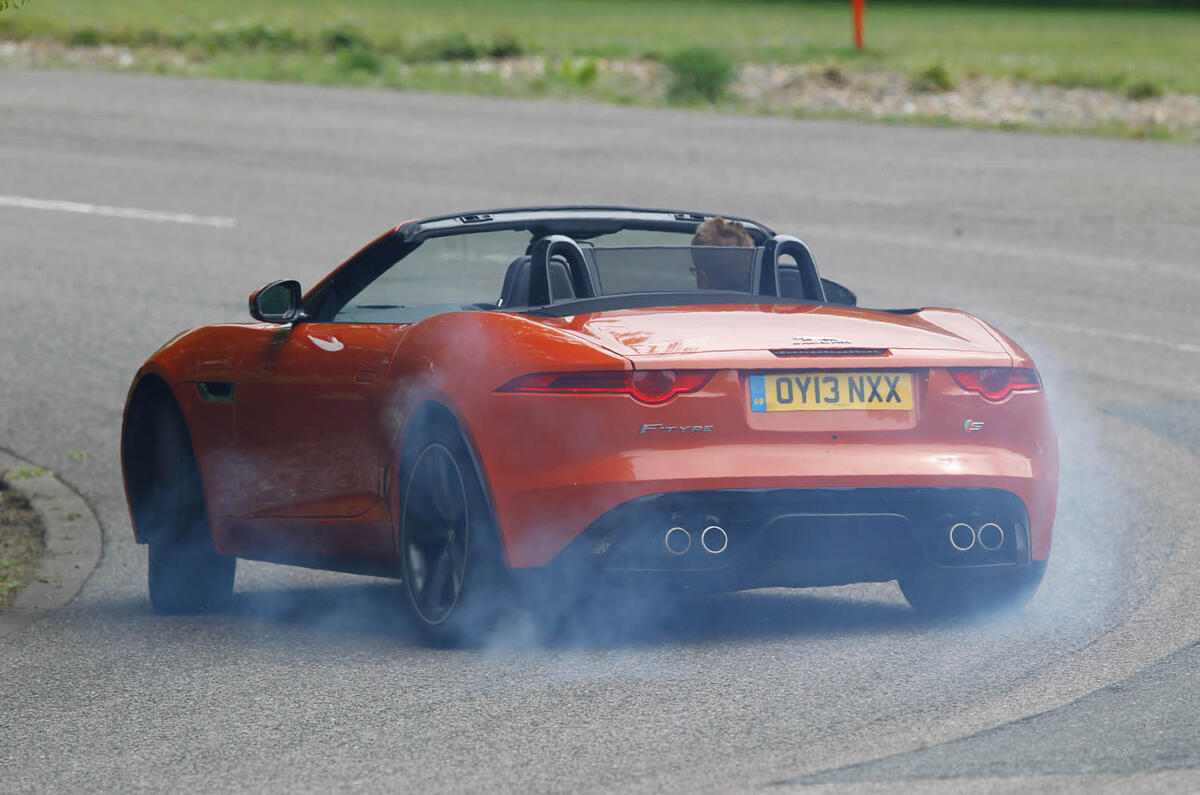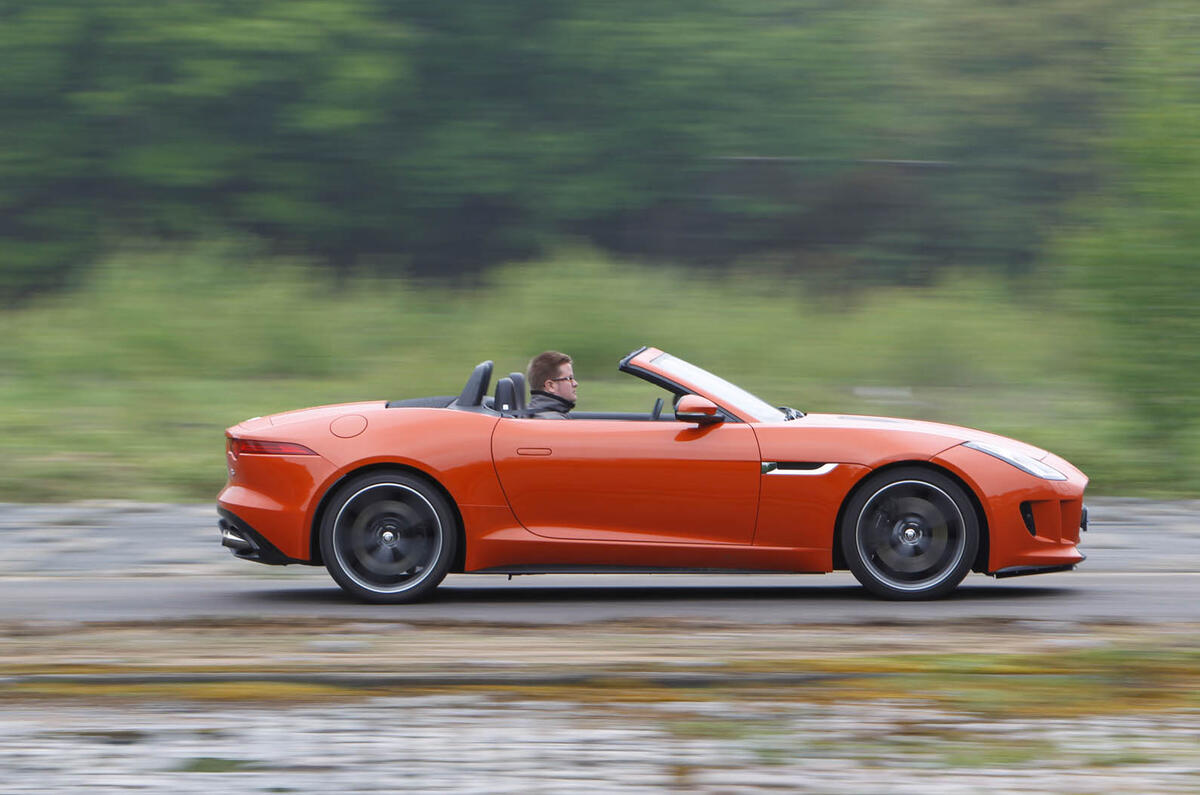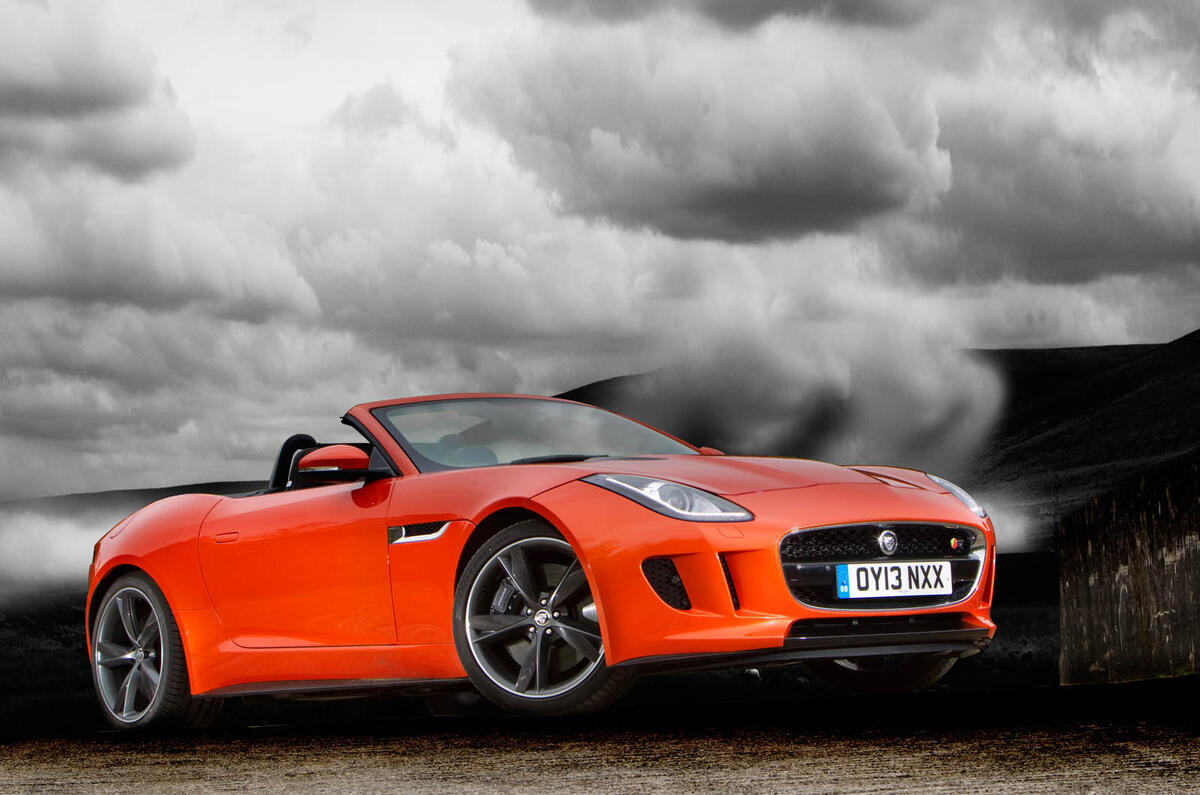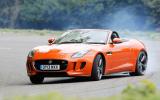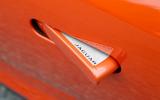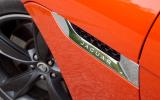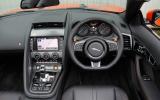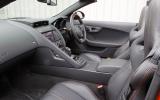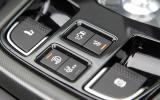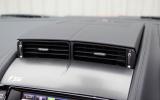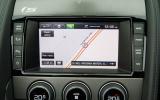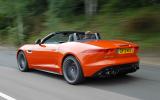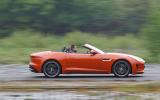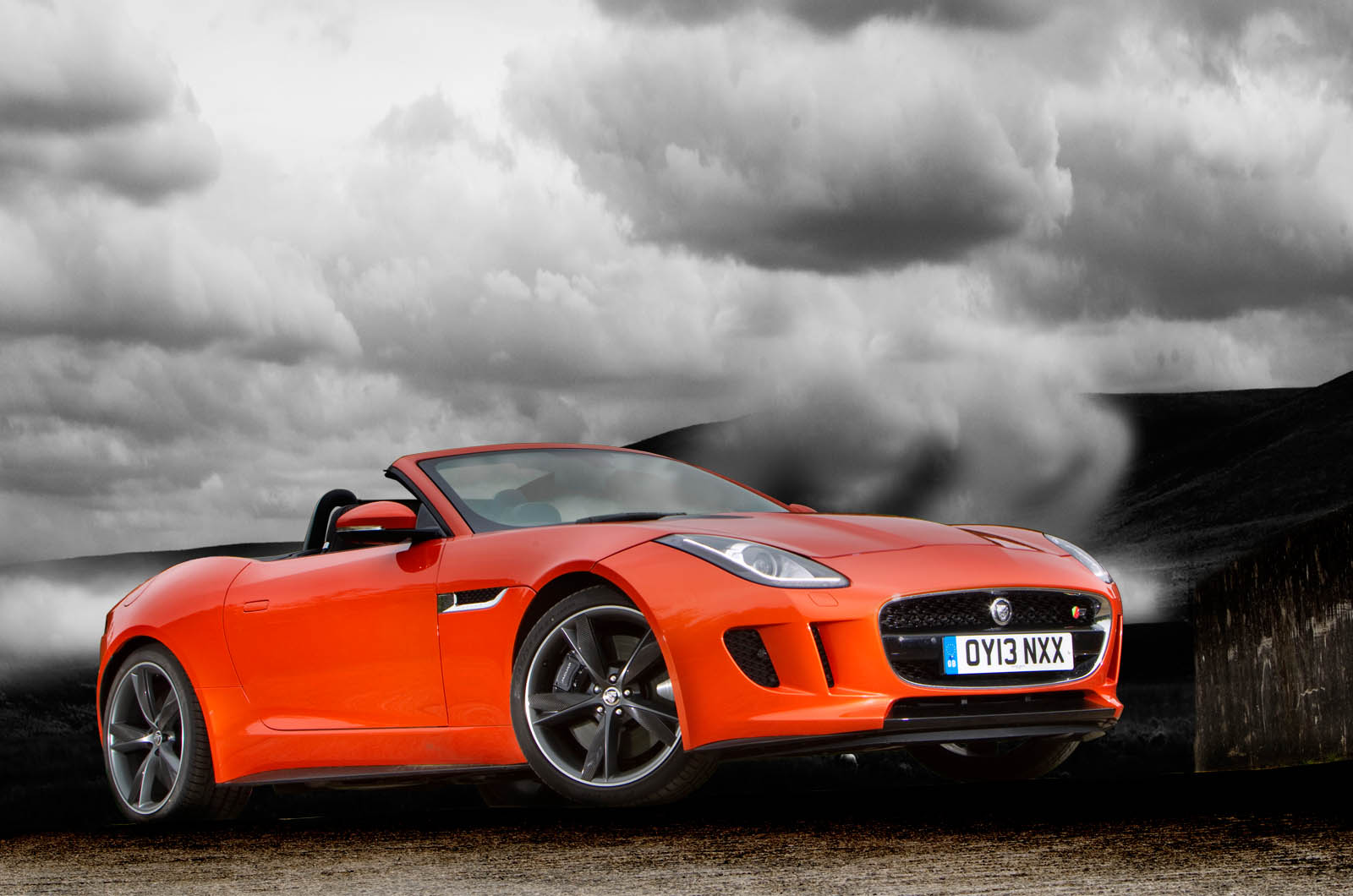You don’t sit on or in the Jaguar F-Type; instead, you climb aboard and peer over the dash like a remora fish looking past a shark’s jaw.
The sensation that you’ve been countersunk into the high-sided cabin is essential to the car’s striven-for intimacy (and is helped by having a bulkhead behind the seat backrest), and even if the surfaces don’t quite fall towards the driver as intended, there’s no denying the snug purposefulness.
We’ve alluded to the age of Jaguar’s switchgear recently, so the interior’s renewal is as welcome as it is significant. The gear selector dial has gone, replaced by a joystick-size, trigger-fired obelisk of a shifter. It’s satisfying to use but not so comfortable to hold – functional, then, not a rest for your left hand.
Around it, the rest of the excellent cabin follows suit, tending towards a more athletic brand of sporting luxury than has previously been encountered in a modern Jaguar.
The steering wheel rim has simultaneously shrunk in diameter and increased in girth, acquiring an optional flat bottom on the way.
The two-tone dials are pointedly analogue and noticeably bolder, while the button to access Jaguar’s familiar Dynamic mode is now a slider switch that must be armed like a missile array, and is picked out (along with the gearshift paddles and engine start button) in a metallic orange finish.
Most functions are mastered via a centre console meant to be solely the preserve of the driver. The passenger’s side is clearly demarcated by a prominent grab handle and slightly different trim finishes: there can be no mistaking that this is a cabin meant for the driver, and for driving.
The cockpit isn’t without one or two quality question marks – the dials flex a little on their mountings, the indicator stalks feel cheap and some of the materials aren’t finished in a manner consistent with the F-Type’s pricing – but the overall impression is one of stylish, luxurious and convincing substance. The meagreness of the 196-litre boot is still an issue, though. It’s big enough for a couple of soft bags, but that doesn’t make it big enough.
As for trims, they are largely limited to the five models available - F-Type, R-Dynamic, 400 Sport, R and SVR. Entry-level cars come fitted with 18in alloy wheels, xenon headlights, LED rear lights, a deployable rear spoiler, active sports exhaust and a passive sprung suspension set-up on the outside, while inside there is electrically adjustable sports seats, a leather upholstery and Jaguar's 8.0in touchscreen infotainment system complete with sat nav and a 170W Meridian sound system.
Upgrade to R-Dynamic and the F-Type Convertible gains extra glossy black trim, adaptive LED headlights and 19in alloys, but if you opt for the 375bhp V6 model you will find 20in alloys, adaptive suspension and a limited slip differential fitted as standard.
The limited edition 400 Sport models gain a unique satin grey exterior and alloys, with dashes of yellow on the bodywork, inside there are aluminium paddles shifters, numerous 400 Sport decals and a premium leather upholstery trimmed with yellow stitching.
The range-topping R and SVR models not only get the stunning 5.0-litre V8 engine under the bonnet but also 20in alloy wheels, all-wheel-drive system, electronic active differential, keyless entry and go, aluminium dashboard trim and ambient interior lighting, while the SVR gains forged alloy wheels, a lightweight titanium exhaust, a beefy bodykit, a carbonfibre rear wing, front parking sensors and heated steering wheel.


